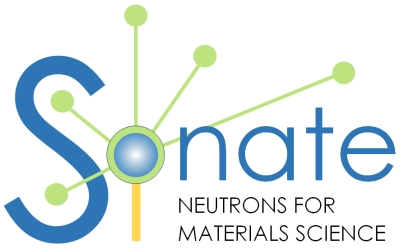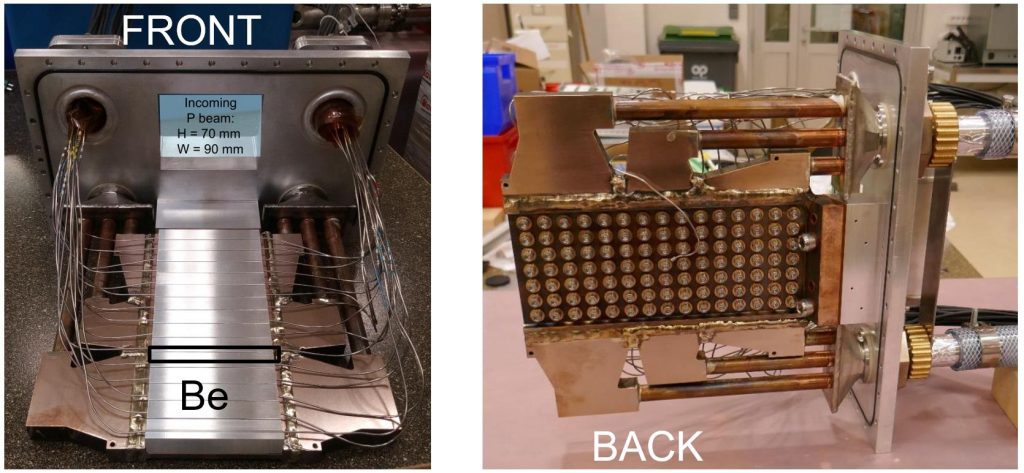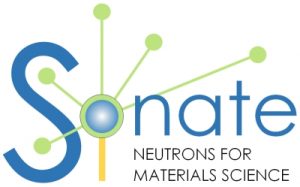
At the Laboratoire Leon Brillouin in Saclay with IRFU, we have designed and built a beryllium target with the aim to eventually sustain a 50 kW of a rastered beam during 1000 hours (or 30 kW of a fixed beam). This target has been tested succesfully at the IPHI accelerator in Saclay between January 26th and february 11th 2022. The target prototype was operated at a power of 28 kW for more than 100 hours with a fixed beam (93% of the designed power). During this rest run, our first diffraction experiment has been performed on an extruded steel rod using the Diogene instrument.

Front and back view of the new high power target.

The Diogene neutron scattering instrument (front right) installed in the experimental casemate of the IPHI accelerator (at the back of the image). On the left part of the image, you have a view of the Target Moderator Reflector assembly (TMR) containing the Be target. The sample has been set at the middel of the Eulerian cradle in front of Diogene.

First diffraction measurement performed on Diagene on an extruded steel rod with an aquisition time of 15 minutes.
This first measurements were realized with non optimized pulsed width and repetition rate. They show that in optimized conditions, measurements can be performed within 1 or 2 minutes. Using higher energy proton beams (20 MeV instead of 3 MeV) will improve the instensity by more than a factor 100, demonstrating the competitiveness of such a source for neutron scattering with small and medium power nuclear reactors.


